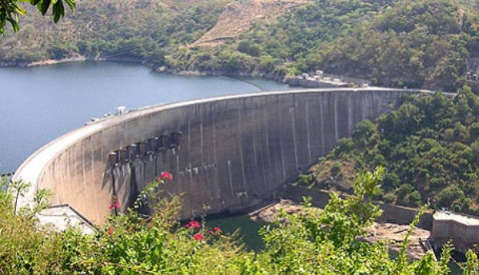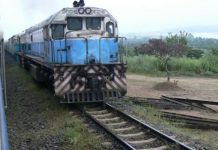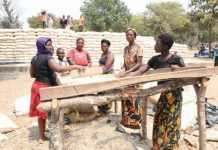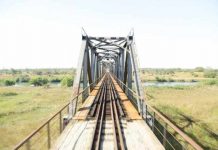ABOUT US$294 million has been secured to finance the Kariba Dam rehabilitation works, following the discovery of the dam’s structural and stability problems in a series of assessments.
Deputy Minister of Energy and Water Development Charles Zulu said in an interview that funding for the rehabilitation of the dam has been provided by Zambezi River Authority (ZRA), World Bank, African Development Bank, European Union and Swedish Government.
“The first works will involve reshaping of the plunge pool and we envisaged that by November 2016, the contractor will be on site, while rehabilitation works on the spillway gates will begin in 2017,” he said.
Mr Zulu said the designs for the spillway gates are at an advanced stage and equipment will be brought on site by 2017.
“Between now and the start of the project, we don’t expect anything sinister to happen in terms of the safety of the dam and its structure. Whilst we are crying that there is no water for generation, this is an opportune time to carry out the rehabilitation without any risks because of the low water levels,” he said.
Mr Zulu said the ZRA plans to build a coffer dam to prevent water coming out of the power station, affecting the rehabilitation of the plunge pool.
Meanwhile, Government says about US$5 billion is required to construct an efficient modern Batoka hydro power station, whose capacity has been increased from the initial 1,600 megawatts(mw) to 2,400mw.
Mr Zulu said the Batoka project has excited a lot of financiers from around the world, adding that by July next year, bidders will be invited to tender for the project.
“A lot of ground work has been done for the Batoka project, the updating of the 1994 feasibility study is near completion. We are waiting for the geo-technical investigation, which will help ensure that the dam and powerhouse are built on sound rock,” he said.
Mr Zulu said the updated Batoka project feasibility study shows an increment of capacity from initial 1,600mw to 2,400mw.
He said the new development meant that both Zambia and Zimbabwe are looking at building two power stations, each with a capacity of 1,400mw from the current 800mw.
“The current study is looking at efficient turbines, surface power station, unlike the current power stations that are underground; obviously the surface station is cheaper than underground,” he said.
By March next year, an environmental social impact assessment study is expected to be ready for public interrogation.

 JOIN DRIVERN TAXI AS PARTNER DRIVER TODAY!
JOIN DRIVERN TAXI AS PARTNER DRIVER TODAY!











